Master Situational Awareness (Effective Decision-Making)
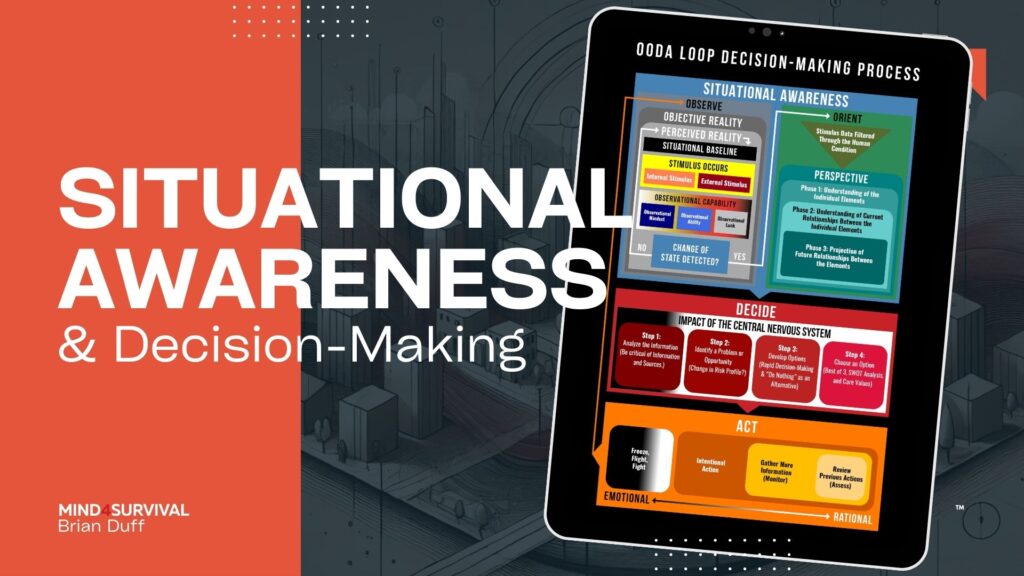

Podcast: Play in new window | Download
Situational awareness and decision-making are skills we all use, often without thinking. These essential skills help us navigate daily life, avoid problems, and take advantage of opportunities. In this episode, we explore the process behind these skills and how you can sharpen them for better outcomes in any situation.
What is Situational Awareness?
Situational awareness is much more than simply being alert. It's about perceiving your environment, understanding what's happening, and predicting what might come next. This awareness sets the stage for effective decision-making. It's a powerful tool for both avoiding risks and recognizing potential opportunities.
The goal is to take a step back, look at your surroundings, and, more importantly, interpret what you see, hear, and even feel. It's not enough to just observe—you have to understand the implications of what’s happening.
For example, if you notice someone behaving unusually in a crowded public space, your situational awareness will trigger a deeper assessment. Are they lost, agitated, or potentially dangerous? This deeper observation can give you a clearer idea of how to respond.
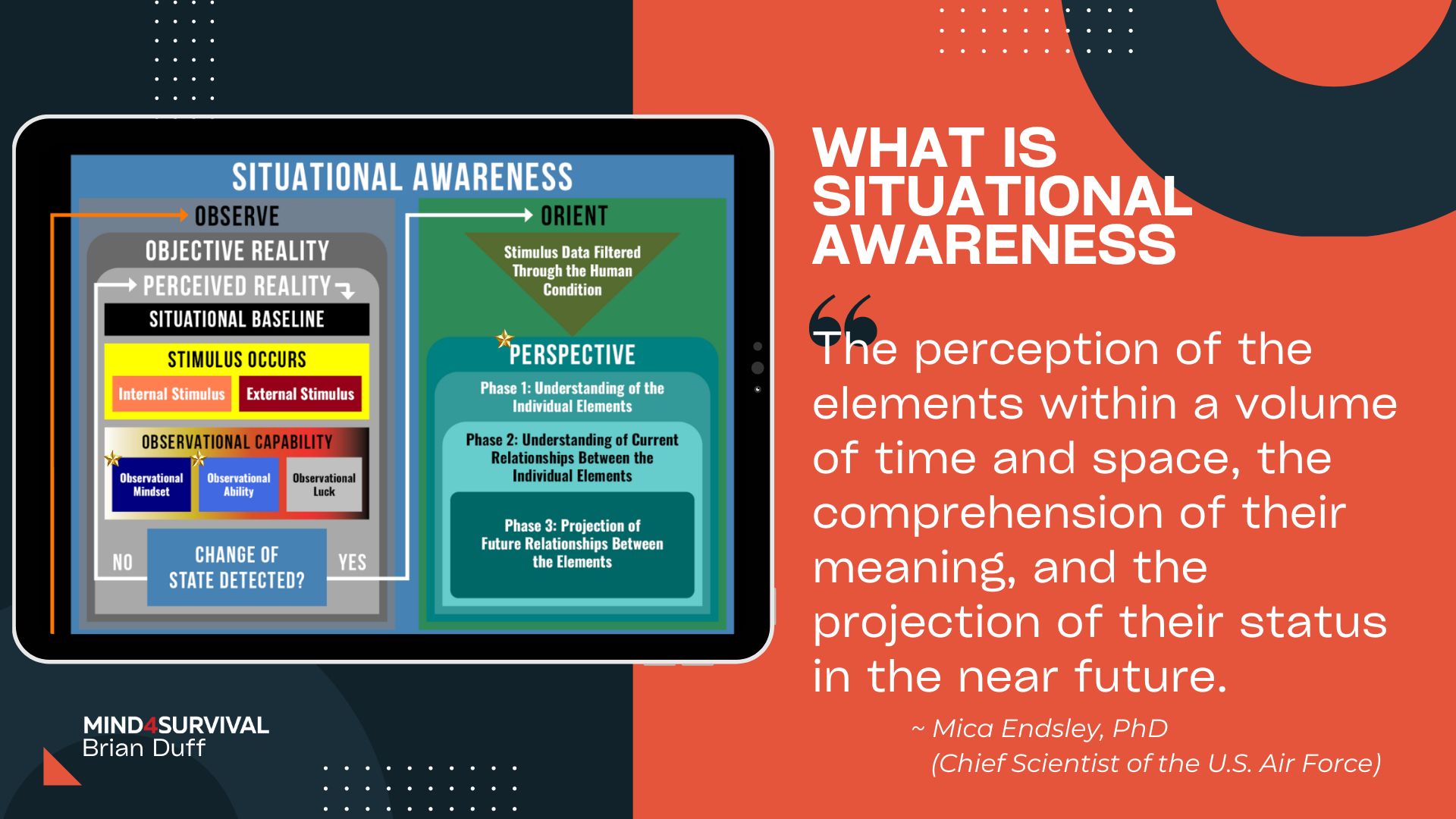
The OODA Loop: A Framework for Awareness
The OODA Loop, developed by John Boyd, is a key model that helps explain situational awareness and decision-making. The four stages of the loop are:
- Observe: Take in information from your environment.
- Orient: Process what you've observed and make sense of it.
- Decide: Choose the best course of action.
- Act: Implement your decision.
The first two stages (Observe and Orient) relate to situational awareness, while Decide and Act are part of the decision-making process. Understanding these phases is crucial for navigating complex or high-pressure situations.
This model is particularly useful because it emphasizes the continuous nature of awareness and decision-making. As you make decisions and act, the loop starts again as you reassess your environment. This ensures you always adapt and respond to changes, rather than relying on outdated information or assumptions.
Why Situational Awareness is Important
Many people think situational awareness is only useful in emergencies or dangerous situations. While it certainly helps in those cases, it's just as valuable for everyday life.
Being aware helps you:
- Spot potential threats early.
- Notice opportunities others might miss.
- Make smarter, quicker decisions.
These benefits translate into better personal safety, improved professional performance, and even increased life satisfaction. Imagine walking into a meeting with a heightened sense of awareness—not just of the room, but of the mood, the unspoken dynamics, and the small cues from your colleagues. This can give you a major edge in managing relationships and seizing opportunities.
Practical Applications of Situational Awareness
Think about a time you avoided a problem just by paying attention. Maybe you noticed a car swerving in traffic or a suspicious individual in a parking lot. These are simple examples of how awareness can keep you safe.
However, situational awareness also applies to more positive outcomes. By paying attention to subtle changes in your environment, you might recognize opportunities others overlook—whether it's a great business deal or a chance to make a new connection.
For example, athletes use situational awareness on the field or court to anticipate plays. Business leaders use it during negotiations, reading body language and listening to tone to guide their strategy. Whether you’re at work, at home, or out and about, staying alert to your environment can pay off in many ways.
The Role of Mindset in Awareness
Mindset plays a huge role in your ability to stay aware. Your level of alertness can be compared to Cooper's Color Codes, a system that helps assess your mental state:
- White: Unaware and unprepared (e.g., relaxed at home).
- Yellow: Relaxed alertness, aware of surroundings.
- Orange: Specific focus on a potential issue.
- Red: Ready to take action.
Adjusting your mindset to match your surroundings is key to staying aware without feeling stressed or paranoid. Most people should aim to stay in Condition Yellow—generally aware, but not anxious. This state of relaxed alertness helps you stay ready to identify changes in your environment without wearing yourself out.
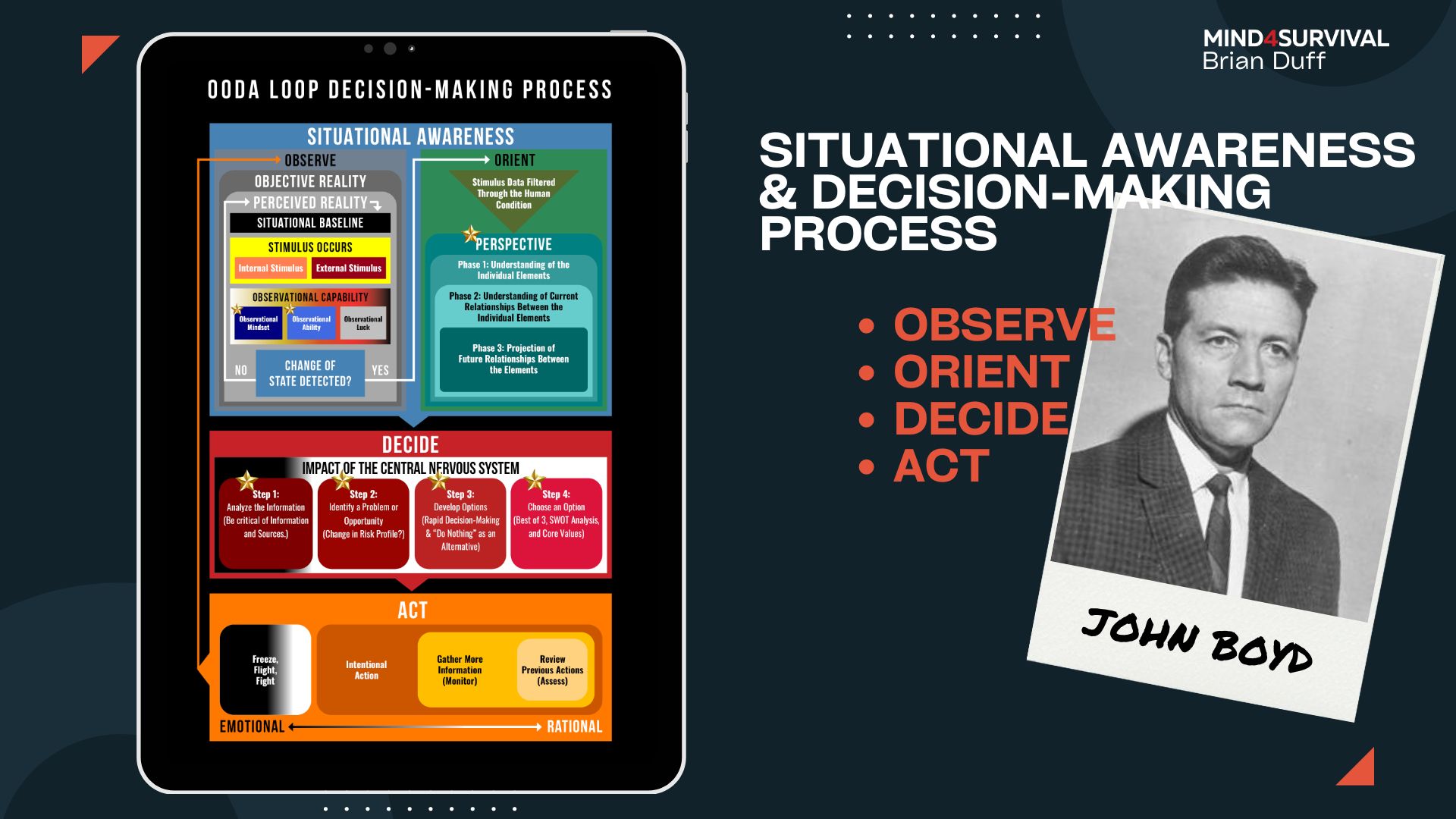
Decision-Making: From Awareness to Action
Once you've observed your environment and oriented yourself, it's time to make a decision. Decision-making involves analyzing the situation, identifying options, and choosing the best course of action.
It's important to realize that not every decision requires immediate action. Sometimes, the best choice is to take no action at all. Allowing a situation to develop before jumping to a conclusion can prevent hasty, ill-informed decisions.
The Importance of Risk Management
A good decision requires proper risk management. This means assessing the potential threats and opportunities before taking action. Whether you're in a life-threatening situation or deciding on a business venture, understanding the risks is vital.
Risk management doesn't only apply to extreme cases. Even in everyday decisions, it helps to weigh your options. Think about the potential consequences of each choice. Does the benefit outweigh the risk? This is the core of effective decision-making.
Enhancing Your Decision-Making Skills
Improving decision-making starts with better situational awareness. Here are some tips:
- Train your observation skills: Practice noticing small details in your environment. Challenge yourself to recall what you’ve seen, like the license plates of cars around you or the number of exits in a building.
- Fine-tune your mindset: Stay aware without becoming overly focused on any one thing. Balance is key—be alert to changes without letting them dominate your attention.
- Manage stress: The fight-or-flight response can impair logical thinking. Being aware of your emotional state helps you stay calm under pressure.
- Gather quality information: The more accurate your observations, the better your decisions. Don’t rely on assumptions or biases. Take the time to gather the right information before making a move.
The Bottom Line About Better Situational Awareness and Decision-Making
By focusing on situational awareness and decision-making, you can improve your personal safety and take advantage of opportunities more effectively. Here's a summary of what we've covered:
- Situational awareness is about more than noticing danger; it's a tool for making better decisions in all areas of life.
- The OODA Loop is a powerful model for breaking down awareness and decision-making into manageable steps.
- Mindset matters. Adjust your awareness level to match the situation, and always be ready to take action when needed.
- Improving your risk management and decision-making skills will lead to better outcomes, no matter the situation.
Staying aware and making smart decisions go hand in hand. Whether you're avoiding potential risks or seizing an opportunity, having the right approach will help you succeed personally and professionally.
What are your thoughts on situational awareness? Tell us in the comments below.
Additional Resources
- How to Spot Trouble Before It Starts: Situational Awareness Tips
- Pet Preparedness & Neighborhood Situational Awareness
- ASIS: Situational Awareness
Stay safe,

3 Comments
Leave a Comment
FREE GUIDE
Get the Bestseller!
Join Mind4Survival!
Stay informed by joining the Mind4Survival! 100% Secure! 0% Spam!
Affiliate Disclosure
Mind4Survival is a free, reader-supported information resource. If you make a purchase through our link, we may, at no cost to you, receive an affiliate commission.

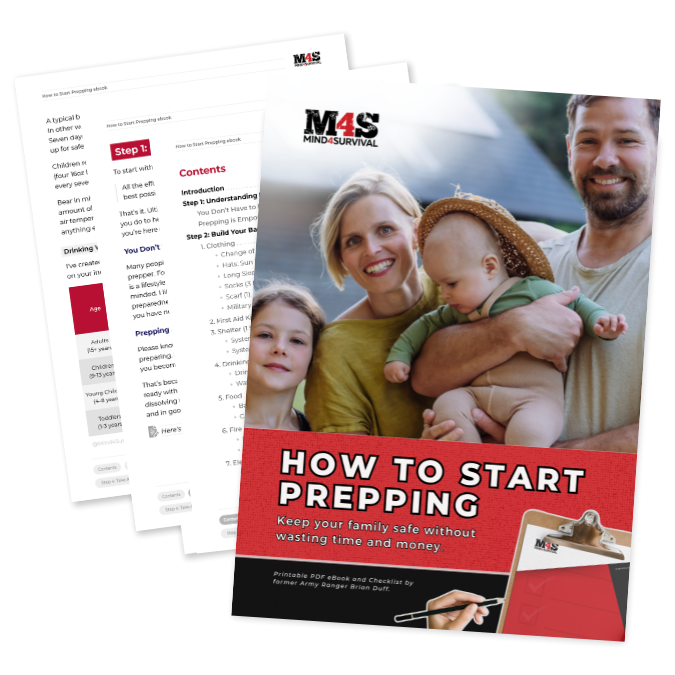
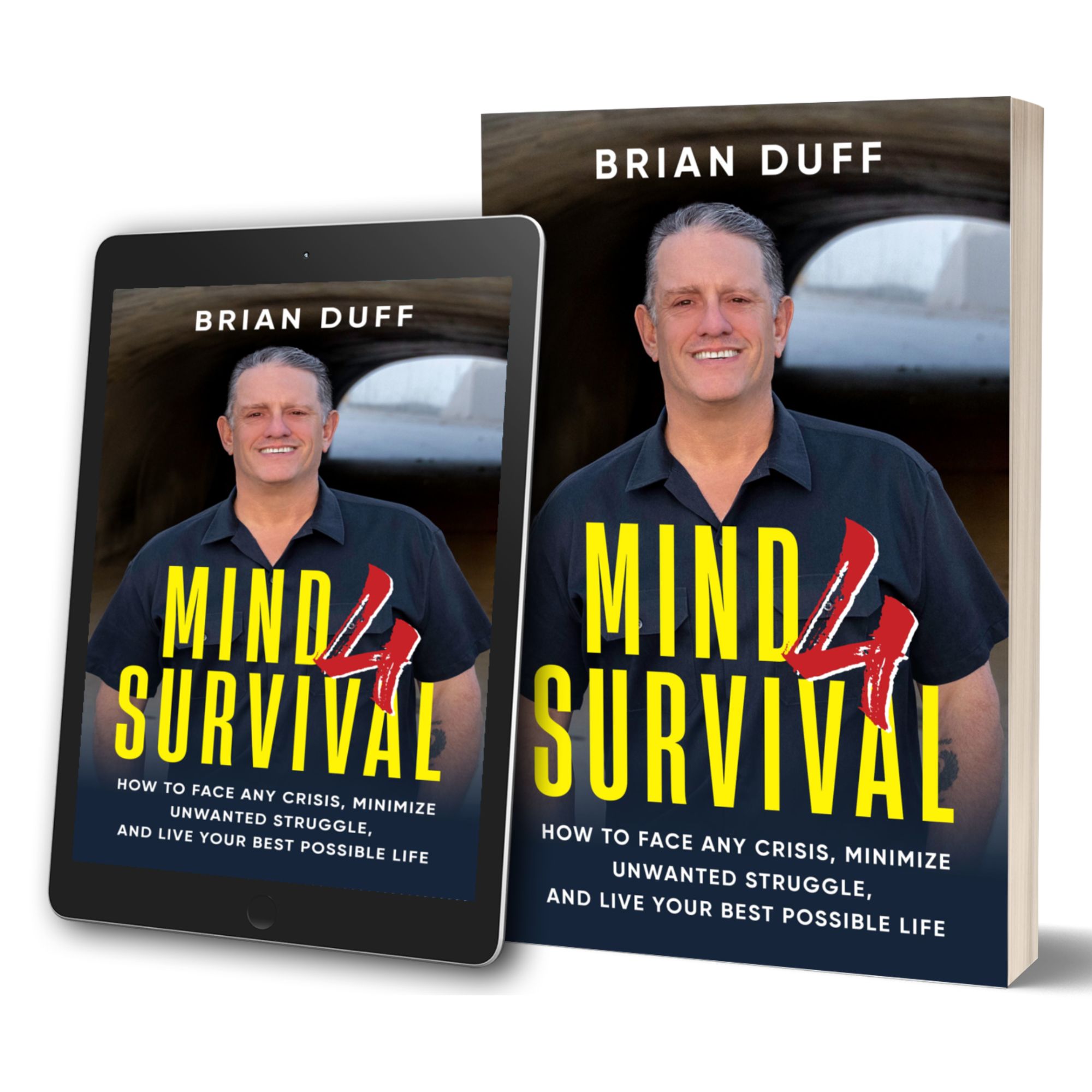
Great read.
Thank you for sharing!
Warm regards,
Brent J.
Last few podcasts sound like you are on a cell phone, requires louder volume compared to your intro. Audio needs to be addressed, this will be the third in a row I’ve stopped listening to in the middle. Do something well (or don’t bother).
Hi Anna. Thanks for your feedback. Unfortunately, as I mentioned in several of those shows, I was in North Carolina and Georgia making the best out of a difficult situation. Sorry the audio quality didn’t measure up in those episodes. Best regards! ~Brian